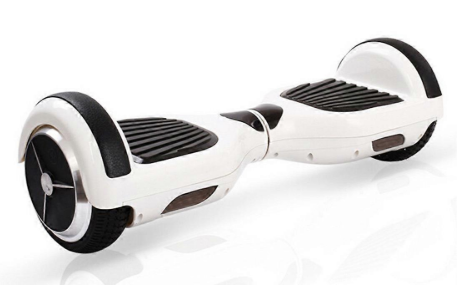
The Heart of a Hoverboard: Understanding Its Power Source
Hoverboards have become a popular mode of personal transportation, combining fun, convenience, and a futuristic design. At the core of their smooth operation lies a vital question many users ask: what kind of battery does a hoverboard use? Most hoverboards rely on rechargeable lithium-ion batteries, typically 36V or 42V, depending on the model. These batteries are compact, powerful, and offer the right balance between weight and performance, making them a perfect match for self-balancing scooters.
Why Lithium-Ion Batteries Are the Ideal Choice
The reason lithium-ion batteries are favored in hoverboards comes down to their efficiency and durability. They can store a large amount of energy in a small space, charge relatively quickly, and last through hundreds of cycles with minimal performance loss. With one full charge, a standard hoverboard can usually travel between 10 to 15 kilometers, depending on rider weight, surface conditions, and riding speed. Their lightweight design also helps maintain the balance and maneuverability that hoverboards are known for.
Safety Considerations Matter More Than You Think
In earlier years, hoverboards sometimes made headlines for battery-related issues. These incidents were largely due to poorly made battery packs without proper safety testing. Thankfully, things have changed. Modern hoverboards now use battery systems that meet strict safety standards and include features like overcharge protection and temperature control. When using or replacing a battery, choosing a well-reviewed and tested product significantly reduces risk and ensures peace of mind.
Maintaining and Extending Battery Life
To keep your hoverboard battery performing at its best, it’s important to follow a few basic habits. Avoid letting the battery drain completely before recharging. Instead, charge it when it drops below 20–30%. Also, keep your hoverboard in a dry, cool place when not in use, and unplug the charger once it’s full to avoid unnecessary strain. These simple steps can help extend the battery’s overall lifespan, often up to three years or more with regular use.
When Replacement Becomes Necessary
Over time, even the best batteries begin to wear out. You might notice that your hoverboard doesn’t hold a charge as well, takes longer to charge, or powers off more quickly. These are signs that a replacement battery may be needed. Choosing a new battery that matches the voltage and capacity of your device is essential. Fortunately, there are some reliable options available that offer solid performance and easy installation. Just make sure the specifications align with your hoverboard model, and always prioritize safety and compatibility when selecting a replacement.
The Future of Hoverboard Batteries
Looking ahead, the technology behind hoverboard batteries is likely to evolve further. New developments such as solid-state batteries and improved charging systems are already being tested in other electric vehicles and may soon make their way into personal transport devices. These advancements promise even better safety, faster charging, and longer-lasting power—all of which could redefine how we use hoverboards in daily life.
Conclusion: The Battery Makes All the Difference
So, what kind of battery does a hoverboard use? The answer lies in the powerful and efficient lithium-ion technology that drives every ride. Whether you’re gliding through the park or commuting short distances, the battery is what keeps your hoverboard going strong. And when performance begins to fade, a carefully chosen replacement can breathe new life into your device, keeping the fun rolling without interruption.